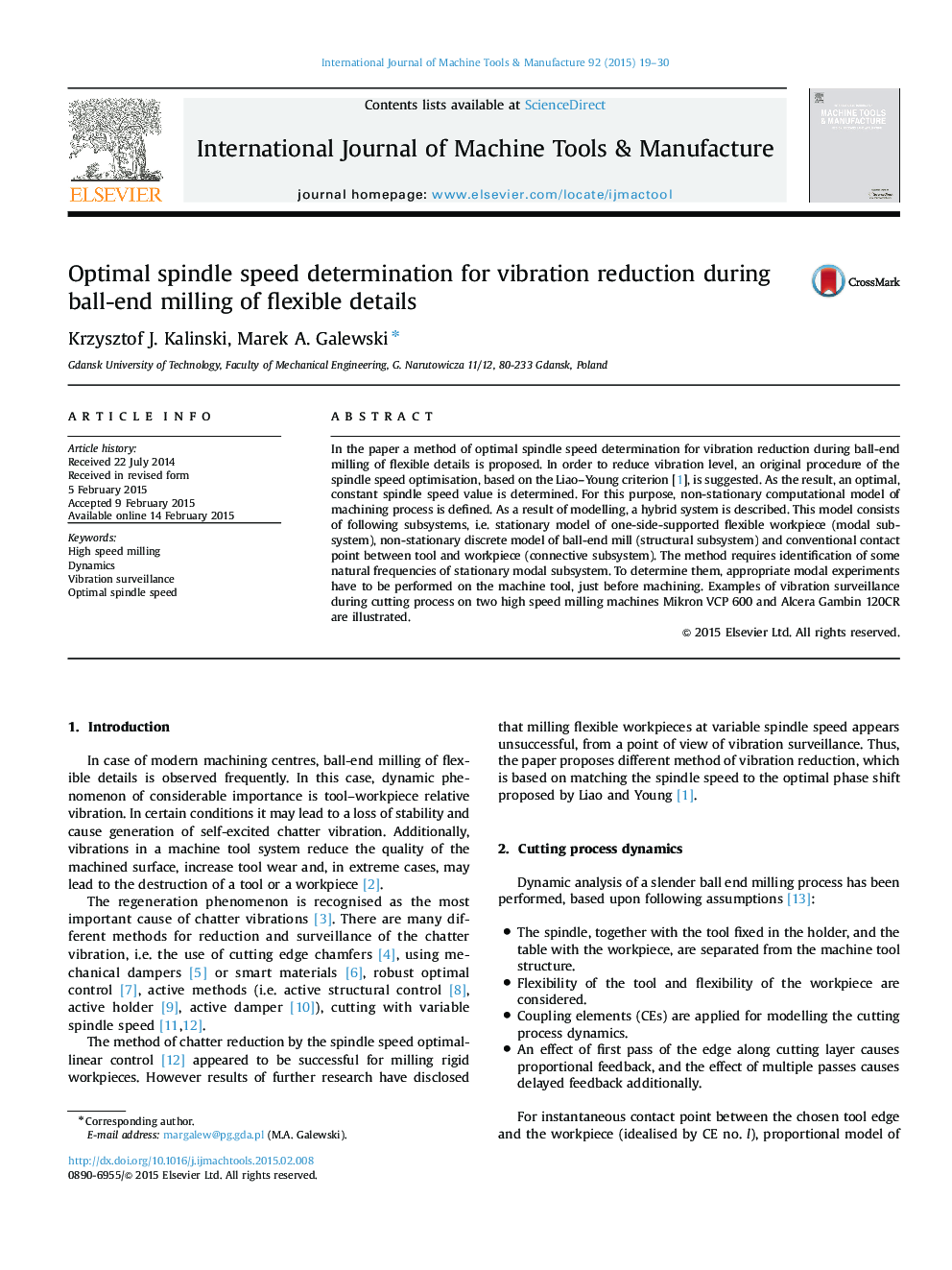| Article ID | Journal | Published Year | Pages | File Type |
|---|---|---|---|---|
| 780700 | International Journal of Machine Tools and Manufacture | 2015 | 12 Pages |
•Description of the milling process and non-stationary system in hybrid coordinates.•Determination of optimal spindle speed.•Vibration reduction obtained.•Surface quality improved.
In the paper a method of optimal spindle speed determination for vibration reduction during ball-end milling of flexible details is proposed. In order to reduce vibration level, an original procedure of the spindle speed optimisation, based on the Liao–Young criterion [1], is suggested. As the result, an optimal, constant spindle speed value is determined. For this purpose, non-stationary computational model of machining process is defined. As a result of modelling, a hybrid system is described. This model consists of following subsystems, i.e. stationary model of one-side-supported flexible workpiece (modal subsystem), non-stationary discrete model of ball-end mill (structural subsystem) and conventional contact point between tool and workpiece (connective subsystem). The method requires identification of some natural frequencies of stationary modal subsystem. To determine them, appropriate modal experiments have to be performed on the machine tool, just before machining. Examples of vibration surveillance during cutting process on two high speed milling machines Mikron VCP 600 and Alcera Gambin 120CR are illustrated.
